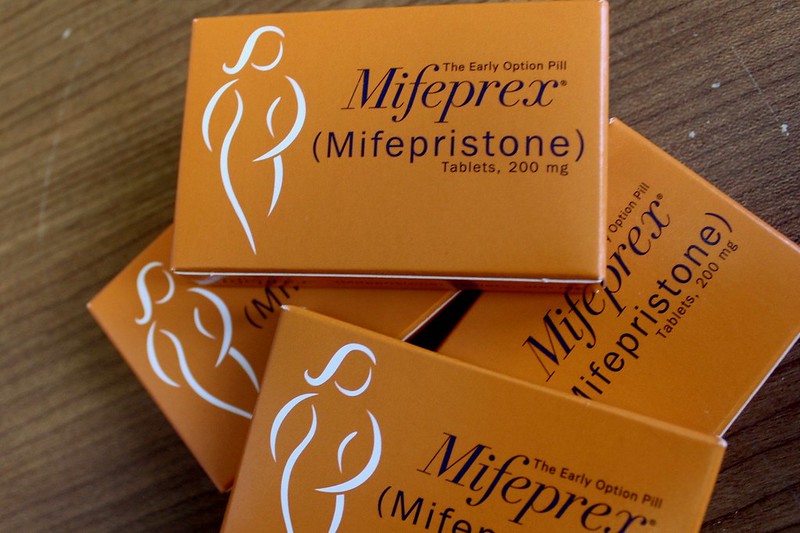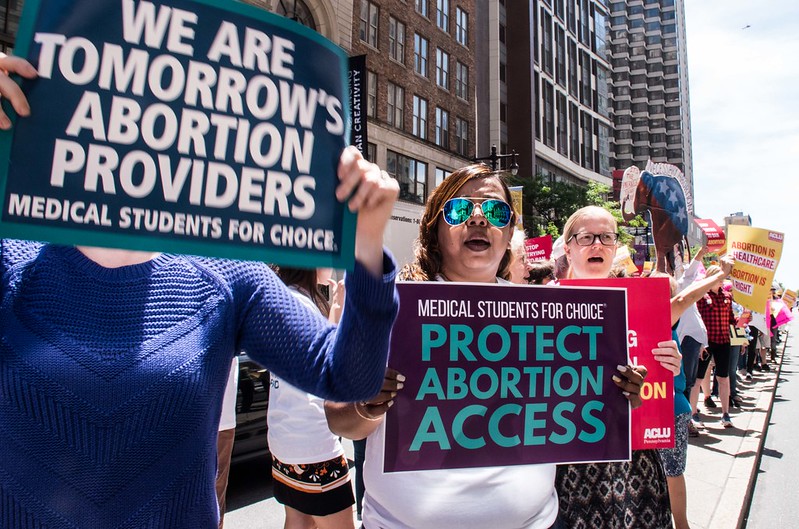Policymakers can help ensure that abortion is more accessible by allowing easier access to medication abortion care.
The past few months have seen escalating attacks on abortion access, with states passing increasingly restrictive and unconstitutional laws. Even before arguments are heard in the upcoming Supreme Court case that directly challenges Roe v. Wade, Texas and other state legislatures have continued to restrict abortion even earlier in pregnancy.
But policymakers can help ensure that abortion is more accessible by allowing easier access to medication abortion care, which is the termination of pregnancy using pills, most commonly through a combination of two medications: mifepristone and misoprostol. It is safe and effective, and can be taken by patients at home. This has made medication abortion care particularly critical during the COVID-19 pandemic, as it reduces time spent in a medical setting.
Medication abortion care is extremely safe—adverse effects occur in less than 0.3 percent of medication abortion in the U.S., making it safer than medications like Tylenol and Viagra. Although medication abortions do not yet make up the majority of abortions in the United States, that proportion is increasing: They made up 39 percent of abortions in 2017, up from 29 percent 2014.
Despite the safety and efficacy of medication abortion care, it is overly regulated in the U.S., limiting access. Mifepristone is subject to an onerous form of restriction from the FDA known as a Risk Evaluation and Mitigation Strategy (REMS). These restrictions limit the medication’s distribution to only “certified” providers (which involves registering with a drug manufacturer), prevent retail pharmacies from dispensing the drug, and prohibits distribution by mail, among other restrictions.
Mifepristone is the only drug—of over 20,000 FDA approved medications—that must be dispensed in a clinical setting but can be taken at home. Very few drugs, and only those associated with serious safety concerns, are typically subject to such restrictions.

One potential option to make medication abortion care more accessible is allowing it to be distributed via telemedicine. In the U.S., remote provision of medication abortion care has been available in a limited manner since 2016 via the TelAbortion Project. By implementing the project as part of a research study, TelAbortion was granted the ability to dispense medication abortion to patients via mail. Screening tests, if needed, (such as ultrasounds, pelvic exams or blood tests) are done at laboratory sites and radiology centers, and communication with abortion providers is done completely through videoconferencing. A peer-reviewed evaluation of the study found that the service was “safe, effective, efficient, and satisfactory.”
Due to the pandemic, the FDA temporarily lifted the REMS limitations on mifepristone, allowing patients to receive medication abortion care via telemedicine in order to reduce in-person office visits. Recently published research drives home the popularity, safety and efficacy of this care.
During the pandemic, enrollment in the TelAbortion study shot up: Monthly enrollment tripled in April, May and June of 2020 compared to the January and March of that year. Study enrollees’ satisfaction was overwhelming, with 85 percent stating that they would choose TelAbortion again; nearly all reported that they would recommend the service to a friend. Crucially, clinical outcomes during the pandemic demonstrated high rates of abortions completed without the need for a procedure (95 percent) with very few adverse outcomes.
The vast majority of U.S. counties lacks abortion providers. Telemedicine abortion care meets the needs of the many individuals who do not live within a reasonable distance to an abortion clinic.
Remote provision of abortion is a key advancement not just because it is feasible and safe, but also because it better meets the needs of the many individuals who do not live within a reasonable distance to an abortion clinic.
As of 2017, the vast majority (89 percent) of U.S. counties lacked abortion providers, with 38 percent of women of reproductive age residing in those counties.
In 2014, 17 percent of patients traveled between twenty-five and forty-nine miles for abortion care, and an additional 18 percent traveled fifty miles or more.
Recent research has demonstrated that greater distances to abortion providers are associated with lower rates of abortion, and increasing the availability of telemedicine use for medication abortion care could help address this unmet need for abortion access. For those who are able to travel long distances to abortion providers, travel results in additional costs: for transportation at the least, and often for child care and missed work as well.
Black birthing people and other marginalized communities are inevitably hit hardest by obstacles to abortion access. In 2014, three-quarters of abortion patients were low-income, and Black women were substantially overrepresented. These disparities are due to a complex web of factors stemming from structural racism, inequitable access to resources like preventative health care, and a legacy of discrimination and reproductive coercion in the U.S. health system.
The COVID-19 pandemic has only increased these disparities in access. Like so many Americans, abortion patients have faced tighter financial constraints and women, low-wage workers and non-white people have borne the brunt of this recession. Child care options—which are crucial supports in this matter, as most abortion patients are already parents—became more limited due to social distancing requirements, with the greatest impacts being felt among families of color. Particularly at the start of the public health emergency, many states attempted to use the pandemic as an excuse to further limit abortion care, again increasing burdens disproportionately for women and pregnant people of color.

It’s clear that making medication abortion care accessible via telehealth is safe, effective and allows for more equitable access. However, several policy changes are needed to make this a reality. The FDA is currently conducting a review of the mifepristone REMS, and should follow the science in eliminating those restrictions.
It is also necessary to eliminate medically unnecessary restrictions around abortion care at the state level—and the House of Representatives has already taken a step in this direction by passing the Women’s Health Protection Act, which would do just that. For abortion care to be accessible, though, it must be affordable: passage of the EACH Act and removal of funding restrictions on abortion would make abortion coverage available to all pregnant people, regardless of their source of insurance.
For medication abortion care to be truly equitable, access via telemedicine can only be part of the solution. Making all options in abortion care available to women and birthing people is key to achieving abortion justice. Whether a patient prefers to receive care in their home, community health center, abortion clinic, or elsewhere, every person should have an opportunity to make that decision free from external interference—including from burdensome and medically unnecessary regulations like those that currently surround medication abortion care.
Abortion care will only be equitable once it is affordable, accessible, void of unnecessary barriers, and available to all individuals in the method and location that they prefer.
Read Anna’s report on medication abortion care, published by The Century Foundation, here.
Up next:





